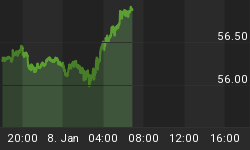The economic crisis and the debate -- what there is of one -- about the alleged anti-recessionary effects of big government spending policies has once again raised the spectre of the Great Depression and once again our commentators get it wrong, particularly journalists, that pesty brood of pseudo intellectuals for whom honest research appears to be an anathema.
Several years ago Alan Wood, The Australian's economics commentator wrote about the dismal fate of the "US economic forecasting industry" that flourished in the 1920s (Dangerous complacency increases investors' appetite for risk, 22 January 2005). It was their "failure to see the depression coming [that] put them out of business," wrote Mr Wood. Just as I expected the tiresome Mr Wood did -- as nearly all journalists do when writing about the Great Depression -- turn to J. K. Galbraith's The Great Crash of 1929 for wisdom.
Wood related how Harvard Economic Service's forecasts failed to warn business of the impending depression. Even in November 1929 it declared "a severe depression like that of 1920-21 is outside the range of probability. We are not facing protracted liquidation." (Galbraith, ibid). The preceding, according to Wood, is "a prudent reminder of the fallibility of forecasts at a time of the year when the voices of economic and market prognosticators are loud in the land." But is it?
Anyone who relies on Galbraith's account of the Great Crash is going to be seriously led astray, which accounts for why reporters are absolutely lousy on this subject. His book is a shallow and misleading work that lacks any permanent value. (The classic work is Murray N. Rothbard's America's Great Depressio, Richardson & Snyder, New York City. There is also Benjamin M. Anderson's Economics and the Public Welfare, LibertyPress, Indianapolis).
What Wood and his fellow hacks clearly do not know is that during the 1920s some economists did warn that a severe depression was unavoidable. In early 1929, for instance, Friedrich von Hayek warned that the US economy was heading for a crash. Writing for the Austrian Institute of Economic Research Report, February 1929, he successfully predicted that "the boom will collapse within the next few months." (Factory production began to contract about six months later).
Then there was Colonel E. C. Harwood -- who founded the American Institute for Economic Research -- persistently warned that the Fed's monetary policy would cause a recession. Benjamin M. Anderson used his position as chief economist at Chase National Bank and editor of the Chase Economic Bulletin to sound the alarm about the Fed's monetary policy and the coming crisis that it was generating.
The brilliant Mr Keynes was not so prophetic. Felix Somary, a Swiss banker, recalled in his The Raven of Zurich (London: C. Hurst, 1960) that Keynes had approached him in the mid-20s for stock recommendations. Somary, who subscribed to the Austrian School of economics, refused to give him any, warning that a speculative bubble was emerging.
Keynes cockily replied: "There will be no more crashes in our lifetime." The financial collapse apparently did nothing to dent his self-confidence. Once the depression was underway he still hailed the price stabilization scheme that caused it as a "triumph." When it suited him, Keynes' conceit apparently left him unfazed by mere facts. On the other hand, D. H. Robertson who had been a supporter of the Fed's monetary policy began to have serious doubts about it once the depression struck.
Ludwig von Mises refused an important job at the Kreditanstalt Bank because, as he told his fiancé, "A great crash is coming, and I don't want my name in any way connected with it." Mises had been warning for years that the central banks' loose monetary policies would bring on a depression.
It is therefore not a question of unsound forecasting but of unsound economics. Under the influence of Irving Fisher virtually the whole of the American economics profession had fallen prey, and still has, to the fallacy that a stable price level means there is no inflation. (Sir Ralph Hawtrey was one of the guiding lights of this fallacy in England). Unfortunately the same situation prevails around the world, hence the present crisis.
The Austrians, however, explained in considerable detail how trying to stabilise the price level will actually destabilise the economy and bring on the very depression the policy was designed to avoid. According to the Austrians the Fed's credit expansion would trigger a speculative boom, which it did; eventually the Fed would be forced to apply the monetary brakes, which it did in December 1928 when it froze the money supply; this would cause malinvestments created by the credit expansion to start emerging by about the middle of the 1929, which is exactly what happened; the bubble would then quickly burst and the economy would go into a fully fledged depression -- the rest, as they say, is history.
Yet 80 years later we are still being told that economics still failed to predict the Great Depression, despite the historical fact that a group of economists succeeded where the mainstream forecasters failed. Widespread ignorance of this fact among those who are paid to know better is an intellectual scandal.
Unfortunately Brookes is the only Australian publication in which you can find this knowledge. You will certainly never find it in Australia's mainstream media.
















